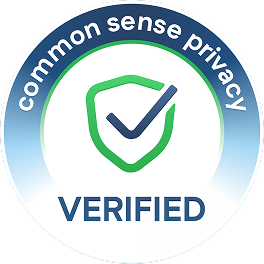Take a look inside 10 images
Prodigy Math
Pros: Fun fantasy context, lots of feedback, informative hints, read-aloud feature.
Cons: Math not fully integrated into adventure, little variation in game mechanics, and premium accounts can create inequities.
Bottom Line: Standard math problems plugged into magical adventure yield helpful data.
It's important to consider how to handle the imbalance in perks and upgrades between students who play on Prodigy Math free accounts vs. those whose families choose to upgrade. This can cause an inequitable experience. Ideally, teachers and schools should find a way for all kids to have premium accounts so that students are on an equal playing field (and don't encounter the distracting ads for a premium upgrade). If this isn't an option, it'd be best to have parents agree to use free accounts.
In terms of versatility, one of the nice things about Prodigy is how relatively easy it is to implement for students working at home or at school. Since it differentiates well and features good in-game instruction, students can be off working at different grade levels and at their own pace, not worrying about anyone but the teacher knowing what they're working on. However, since Prodigy is focused mostly on practicing skills, it's best used as a review tool rather than a means to introduce new topics.
Some teachers use it as part of their math stations or math workshop. To spice things up, teachers can create student tournaments and quests that establish new challenges and goals. Use Focus mode to limit the adventure elements and target math a bit more. Since the math problems don't relate to the setting, challenge students to design problems that relate to magic in some way, like potion recipe word problems, or the geometry of magical crystals. The fantasy setting also lends itself well to extension assignments focused on narrative writing. Students could write background stories for their characters or elaborate on events in the game, creating deeper involvement and investment.
In Prodigy Math, an adaptive math-practice game set in a fantasy role-playing universe, students customize colorful, anime-style avatars and send them off to the Wizard Academy to prepare for battle. Students' characters travel the world: They chat with other wizards through a series of pre-written chat comments, challenge friends to fight in the arena, and brave multiple themed worlds to take on monsters and special bosses. Wizard spells are powered by math problems. As students progress in their math skills, so do their characters, learning new spells to use against enemies. To use these spells successfully, students must flex their math knowledge and answer questions that cover a lot of content and adjust to students' abilities. While playing at home, if students don't succeed on the first try, they get hints and another chance to help them out. Playing from school, they still have access to hints but get only one chance at answering. As they level up, they earn more spells and face more challenging monsters, earning gold they can use to purchase armor and items for their houses.
Teachers can select from a variety of curricular standards when setting up their classes, including Common Core, Ontario Math, NCERTS, and National Curriculum (England). Then they can select the specific skills they want their students to be working on. Kids can use the web-based version on computers or tablets or the app for iOS and Android. Additionally, the integration of Clever makes signing on for students simpler. There's also a Focus mode that increases the amount of time kids are doing math within the program. And teachers can also use the co-teaching feature so that other instructors can work within the same dashboard. Students will all begin with the same type of account, but if a parent upgrades to a premium membership at home, students will have different experiences and perks. Since students can play together and see their classmates' progress, this can lead to students whose families can't afford to upgrade, or don't want to upgrade, feeling left behind.
By mimicking the very basic elements of popular fantasy-based online multiplayer games (with a nod to early '90s games like Zelda and Final Fantasy), Prodigy Math is well tuned to keep kids' attention -- at least at first. They'll love the customization and the setting, and the multiplayer modes will keep them interested long after traditional math activities might lose their luster. And it adapts to a kid's needs and offers helpful data, so you can target concepts more easily.
The main drawback is that the math has nothing to do with the setting: They're textbook math problems that interrupt the adventure at regular intervals. And the repetition of the game mechanic -- wizard battles monster with spells -- might get tedious for some kids. It would be great to integrate the math more fully and to offer a bit more variation. In terms of settings, some teachers will want to remove the calculator from the student toolset, so having that option would be helpful. And because parents can choose to upgrade to a premium membership at home, it's best to either start all kids with a membership (perhaps parents can make sure all kids are covered) or ask that all families agree to use a free account so as not to set up inequities. Premium accounts will also remove the potentially distracting ads that push kids to purchase premium. That said, Prodigy offers a lot for free and will likely keep lower and middle grade students engaged. It's also excellent at providing updates, as there are always new worlds and special things to discover, and students will love the thrill of logging in to find something new.




















